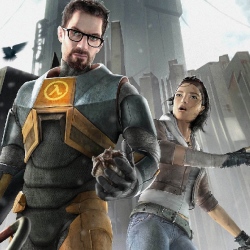
In 1954 a RAND Corporation analyst, R.D Specht, wrote "A game can easily be made fascinating enough to put over the dullest facts”. It would be decades before the first video games, such as The Oregon Trail, would attempt to be ‘learning games’ and try to confirm his prediction.
The general view towards video games over the last 15 years has (thankfully) moved beyond the kneejerk ‘destroyer of children’ reaction given to all new technologies, and people have started to think seriously about how they can be applied to education. Researchers such as James Paul Gee have extended this consideration to commercial titles like World of Warcraft (good for learning teamwork) and SimCity (managing an economy).
Learning games have also evolved beyond simple digitised question and answer systems, games like Digital Zoo offer students environments in which to try, fail, re-try and ultimately learn about topics such as biomechanical engineering. The important realisation for learning scholars and game designers has been that games share many features with good learning environments.
They create environments where failure is encouraged and catered for, allowing players to try different things at their own pace. They introduce new concepts to players gradually, looking for proof of competency before allowing progression, and they maximise learning and enjoyment by keeping the player in a ‘flow’ state using content that’s just challenging enough so as not to be too hard or too easy.
The cognitive theory ‘Case Based Reasoning’ suggests that people find learning easier on the back of embodied experience. An example of this can be seen in the death of video game manuals. Reading about a game and its interface makes little sense until you have experienced it, which is why modern games have ditched manuals, instead expecting players to dive right in and use in-game tutorials.
Could this be the case for science education too? Early efforts in Physics have shown games to be a positive tool for student engagement. Could the same work for other areas also? Could people learn about the human immune system from a game that casts you as a white blood cell, defending the body from diseases?
These questions apply to science communication as well. It is important for the public to be involved with science as public money is spent on research, but also for their own safety, for example knowing that anti-vaccine campaigns are dangerous. Typically this has been done through print/online articles, blog posts, museum exhibits and TV programs, but not video games, really (there are a few examples, such as Sokobond and Reach for the Sun).
I believe video games offer a great opportunity to fascinate the public with different and wide-ranging areas of science, especially those people who are not in education anymore and normally would not be interested in these areas. The challenge for designers is including this science without detracting from the game itself.
And that, really, is the most important thing – making a fun game. The use of Portal and Portal 2 as physics classroom aids are examples of this, even though they were not originally designed as ‘learning’ games, they are being used to teach Thermodynamics. Specht would be proud.
The game, S.O.R.S, is inspired by new scanning technology that could improve diagnosis rates for osteoporosis and breast cancer. With this potential it deserves to be the subject of a game, especially as it’s the sort of technology you may not find out about otherwise! Here is a link to the demo on the game website, why not explore the game yourself?
Richard Chatwin is co-founder of Science: Gamed, an independent games company that makes games inspired by real science
